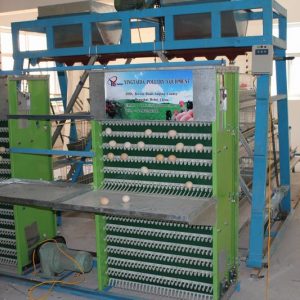The benefits of raising colorful pheasants have been good in recent years. At the same time, with the improvement of people’s living standards, the prospect of colorful pheasant breeding is very broad. At present, the pheasant market is very mature. But the premise is that you have to raise it well and solve the breeding technical problems.
Farm farm construction
1. The location of the chicken farm: The location of the chicken farm should be far away from the crowd, it is convenient to get water, the terrain is high and dry, the lighting is good, the ventilation is good, and the site is large. It is best to build a simple and movable pheasant shed in orchards, forests or hillside grasslands for captivity. It can also be converted into a pheasant house with an old house.
2. Breeding pheasants: The colorful pheasants are ground-fed, and can be renovated by ordinary idle houses or newly built. The newly constructed pheasant house should be designed according to the proportion of each pheasant with 1 square meters indoor area and 2 to 3 square meters outdoor activity field. Egg laying boxes are built in the house, and bamboo fences or nylon nets are enclosed in the outdoor playground, and there are sand baths in the venue. The male and female pheasants are kept separately, and the playground is also separated. If the old house is used to rebuild the pheasant house, the area of the window should be doubled than that of the ordinary house, or it should be changed to a half-wall open structure. The breeding of 100 pheasants requires a 30-square-meter hen house and a 75-square-meter playground.
3. Brooding room: 10 square meters of plastic shed type thermal insulation brooding room.
4. Simple activities to assemble pheasant shed: 10 200 square meters, breeding commercial pheasant from 6 weeks old to sale.
5. Feed production room: a 10m2 brick and asbestos tile structure, used for the production of Tenebrio molitor and EM live bacteria preparation.
6. Simple dormitory: one 8 square meters.
Colorful pheasant breeding technology
The young pheasant cages can be transferred to the ground for rearing or reared into pheasant cages for 6-7 weeks. This period of time to 18 weeks of age is the fastest growth stage for pheasants, with an average daily weight gain of 10 to 15 grams. By 20 weeks of age, it is almost close to the weight of adult pheasants. Therefore, feeding and managing feed at 6 to 20 weeks of age is the key to ensuring the growth and development of pheasants. While doing all the daily management work, you should also pay attention to the following points:
(1) Transfer time and attention issues: Generally, chicks hatched from the end of March to mid-April are raised to 6-8 weeks old, and chicks hatched in summer can be transferred to 5-6 weeks old. 3 days before the transfer, a special person should be assigned to watch the night shift and give 24 hours of light. When transferring groups, we should also pay attention to the separation and breeding of weak chicks, and eliminate sick and disabled chicks in time. 1 to 2 weeks after turning into the ground, choose warm and windless weather, open the doors and windows, let them go to indoor and outdoor sports fields for short-term activities, and gradually extend later, rush into the room at night.
(2) Restricted feeding of reserve pheasants: determine the breeding pheasants reserved for seeding, in addition to 6-8 weeks of age for preliminary selection, you must also control weight and prevent over-fat to ensure a higher egg production rate during the breeding period And fertilization rate. The specific measures are: reduce the protein and energy content in the diet; increase the amount of crude fiber and green feed; reduce the number of feeding; increase the amount of exercise; limit the amount of feed.
(3) The second beak off, anti-pecking addiction: Pheasant is wild and likes to peck foreign objects. The pheasant grows rapidly. If some nutrients are lacking, or the environment is not ideal, or the density is too large, pecking addiction is more likely to occur. In order to effectively prevent pecking, the second beak off can be done between 5 and 10 weeks of age. The method is the same as that of domestic chickens.
(4) Prohibition of moldy and spoiled feeds to prevent the occurrence of aspergillosis: pheasants in the early stage of breeding are susceptible to aspergillosis, and the morbidity and mortality rate of this disease are high. , Control the environment in the house, maintain the required humidity, often disinfect the chicken with peracetic acid, etc., and burn the ground and burnable appliances with a flame sprayer before transferring to prevent the disease.
Colorful pheasant breeding technology is introduced to everyone. Although the colorful pheasant has been domesticated, it also has certain wildness, so it is necessary to pay attention to anti-escape measures during breeding and do a good job in breeding management, which can bring us considerable economic benefits.

